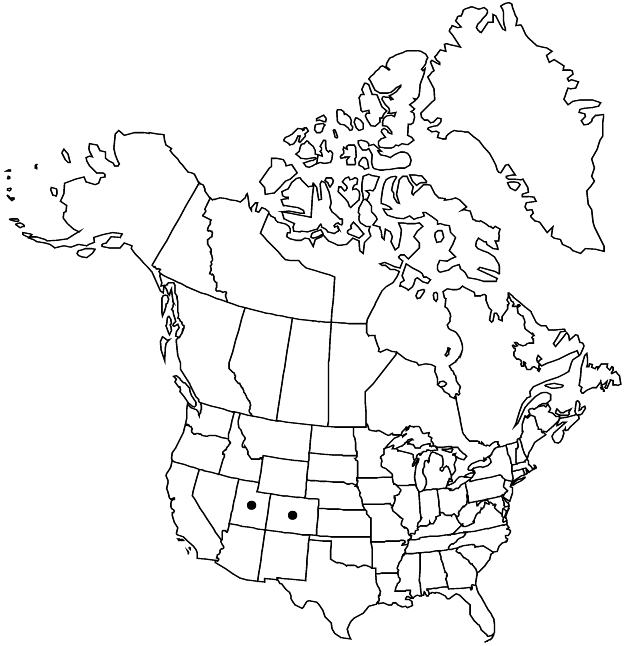Eriogonum batemanii
Contr. W. Bot. 11: 11. 1903.
Herbs, spreading, not scapose, (1–) 1.5–3.5 (–5) × 1–2.5 dm, glabrous, grayish. Stems spreading, usually without persistent leaf-bases, up to 1/4 height of plant; caudex stems absent; aerial flowering-stems erect, slender, solid, not fistulose, 1–2 dm, glabrous. Leaves basal, 1 per node; petiole 0.8–2.5 (–4) cm, tomentose; blade elliptic, (1–) 1.5–3 (–5) × 0.6–1 (–1.2) cm, densely white-tomentose abaxially, less so and white adaxially, margins plane. Inflorescences cymose, 4–15 × 5–15 cm; branches dichotomous, glabrous; bracts 3, scalelike, triangular, 1–2 mm. Peduncles absent. Involucres (1–) 2–5 per cluster, turbinate, 2–4 × 1.5–2.5 (–3.5) mm, glabrous; teeth 5, erect, 0.5–0.8 mm. Flowers 1.5–3 mm; perianth white, glabrous; tepals connate proximally, monomorphic, obovate; stamens exserted, 1.5–3.5 mm; filaments sparsely pilose proximally. Achenes light-brown to brown, 2.5–3 mm, glabrous. 2n = 40.
Phenology: Flowering Jun–Sep.
Habitat: Shaley, silty, gravelly, or clayey flats, washes, and slopes, saltbush and sagebrush communities, juniper woodlands
Elevation: 1400-2600 m
Discussion
Eriogonum batemanii is fairly common throughout its range in northwestern Colorado (Moffat and Rio Blanco counties) and east-central Utah (Carbon, Duchesne, Emery, Garfield, Grand, and Uintah counties). In Duchesne County it hybridizes with E. shockleyi, producing an unnamed but distinctive hybrid.
Selected References
None.
Lower Taxa
"/2" is not declared as a valid unit of measurement for this property."dm" is not declared as a valid unit of measurement for this property."dm" is not declared as a valid unit of measurement for this property.
